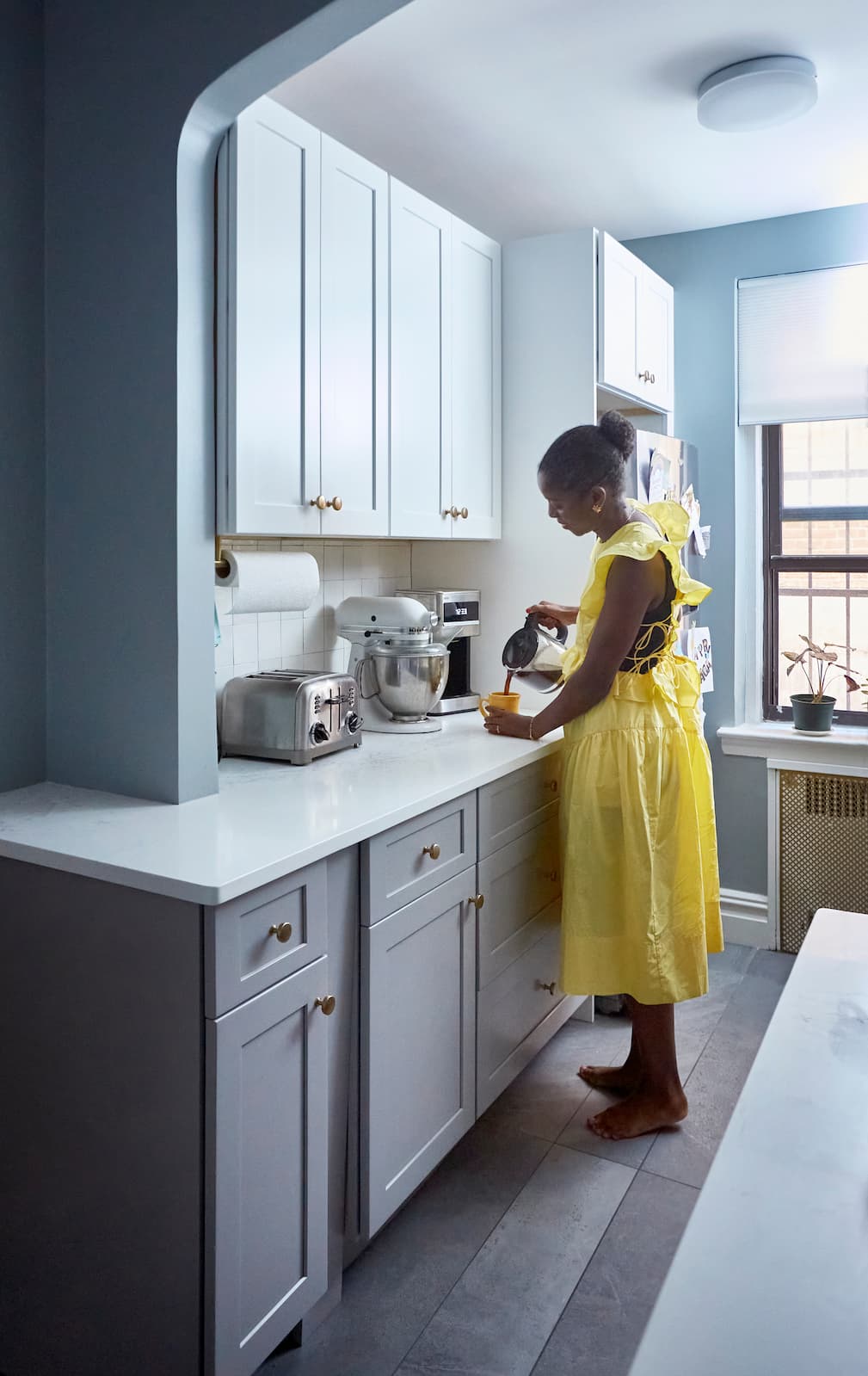
Flooring
Checkerboard Tile Flooring - Inspiration & Practical Tips
12.21.2025
Our New Year savings event is here: Get up to $6,500 off your project today (terms apply).

Budget your upcoming remodel with help from Block

In This Article
Fresh carpeting is one of the most effective ways to breathe new life into a room. Beyond comfort and warmth, it can completely refresh the style and atmosphere of your home, whether you’re updating a well-loved living space or making a first impression for future buyers.
When budgeting for this upgrade, most homeowners find the installed carpet cost falls between $3 and $12 per square foot, including both material and professional installation. For most projects, that translates to a total of about $1,200 to $3,500, though prices can rise with larger areas or more premium options.
While carpeting may seem like a straightforward improvement, there’s more to the cost to replace carpet than meets the eye. The final price is shaped by your choice of carpet style, material quality, labor, and the individual requirements of your home—all factors worth considering as you plan your next renovation.
For those considering new flooring, carpet often emerges as a cost-effective option—especially in bedrooms and family rooms. Unlike hardwood or tile, carpeting typically presents a lower upfront investment, particularly with standard synthetics or budget-friendly polyesters. However, upfront savings should be weighed against longevity, aesthetics, and ongoing maintenance, all of which set carpet apart from other materials.
Here’s where carpet sits for installed cost compared to other popular floors (national averages, installed):
Carpet can be more economical up front, but each flooring type brings its own balance of cost and value.
Renovate with confidence every step of the way
Step 1: Personalize Your Renovation Plan
Step 2: Receive Quotes from Trusted Contractors
Step 3: Let Us Handle the Project Details

How long your carpet lasts is a crucial part of the cost equation. Most modern carpets deliver 8 to 10 years of everyday use with normal wear, especially with good maintenance and the right padding. In homes with heavier traffic, kids, or pets, areas may start to show wear earlier, sometimes needing replacement after 5–7 years. By comparison:
Carpet’s softer surface is inviting, but its shorter longevity means replacement costs should be factored into your long-term flooring budget. The upside is that new carpet can regularly refresh a room’s look, and replacing damaged sections is typically less complicated than with seamless surfaces like tile or hardwood.
While fresh, neutral carpeting can make a strong first impression with buyers by conveying cleanliness and warmth, the overall return on investment (ROI) for carpeting is lower than for more permanent choices like hardwood or tile.
Many buyers today see carpeting as less desirable in main living spaces and may prefer hard floors for their durability and upgrade appeal. That said, high-quality carpet in bedrooms or family rooms can still contribute positively to your home's presentation—especially if the rest of your finishes support a well-maintained look. Ultimately, the specific ROI is shaped by trends in your local market, buyer expectations, and the materials you select.
Installers will start by removing old carpeting and padding, repair the subfloor if needed, lay down new padding, cut the carpet for precise fits, and use specialized tools like stretchers and tack strips to create a seamless, wrinkle-free finish. When done well, this process not only delivers clean lines but also extends the life of your investment.
While it may be tempting to attempt installing carpet yourself, this is one home project where experience is crucial. Proper stretching, seaming, and trimming demands years of practice and the right equipment. Inadequate installation can lead to visible seams, wrinkles, early wear, and voided warranties—costing you more in the long run. Partnering with a trained professional ensures the finished product looks and performs its best—giving you peace of mind as well as a comfortable, safe result.
Compare Proposals with Ease

The type of carpet you choose will influence cost, durability, and feel. Here’s how popular options compare:
|
Carpet type |
Price range (per sq. ft, installed) |
Characteristics |
|
Nylon |
$3–$6 |
Versatile, stain-resistant, durable for families and pets |
|
Polyester |
$1-$4 |
Budget-friendly, vibrant colors, soft but less durable over time |
|
Olefin (Polypropylene) |
$1-$4 |
Moisture-resistant, best for basements or outdoor spaces |
|
Wool |
$8–$24+ |
Natural, sustainable, luxurious, excellent insulation |
|
Triexta |
$3–$8 |
Eco-friendly, strong stain/fade resistance, feels plush |
Design a Home That’s Uniquely Yours
Block can help you achieve your renovation goals and bring your dream remodel to life with price assurance and expert support.
Get Started
Flooring is just one piece of creating a home that feels perfectly you. At Block, we match you with licensed, trusted professionals—guiding you through design choices, budgeting, and the details that matter. Our Renovation Consultants support you from the first measurement to the final installation, making every step more transparent and predictable. Whether you’re updating one room or renovating your entire space, Block ensures you get the expertise and care your project deserves.

Written by Block Renovation
Does carpet installation include removal and disposal of old carpet?
How long does new carpet installation take?
What are signs I should replace my carpet?
Can I replace only part of my carpet?

Renovate confidently with Block
Easily compare quotes from top quality contractors, and get peace of mind with warranty & price protections.
Thousands of homeowners have renovated with Block

4.5 Stars (100+)

4.7 Stars (100+)

4.5 Stars (75+)

Flooring
Checkerboard Tile Flooring - Inspiration & Practical Tips
12.21.2025

Flooring
Best Tile Flooring Materials for Bathrooms
12.19.2025

Flooring
Best Flooring Options for Home Gym Renovations
12.19.2025

Flooring
Top Flooring for Seniors to Install Within Their Homes
12.18.2025

Flooring
Best Flooring Options for Basements
12.18.2025
Renovate confidently